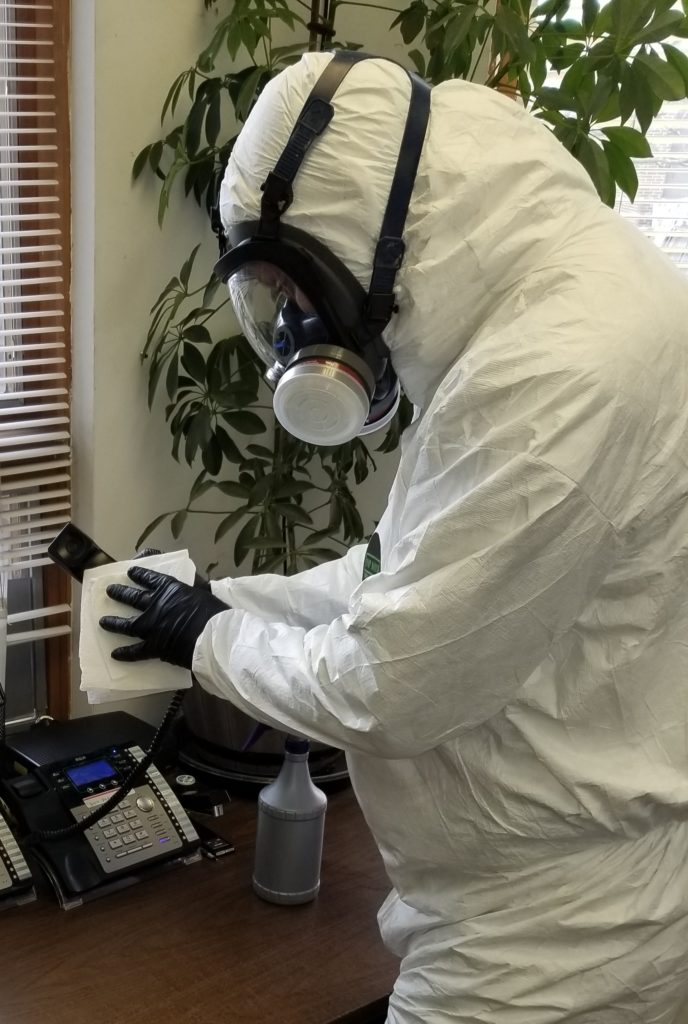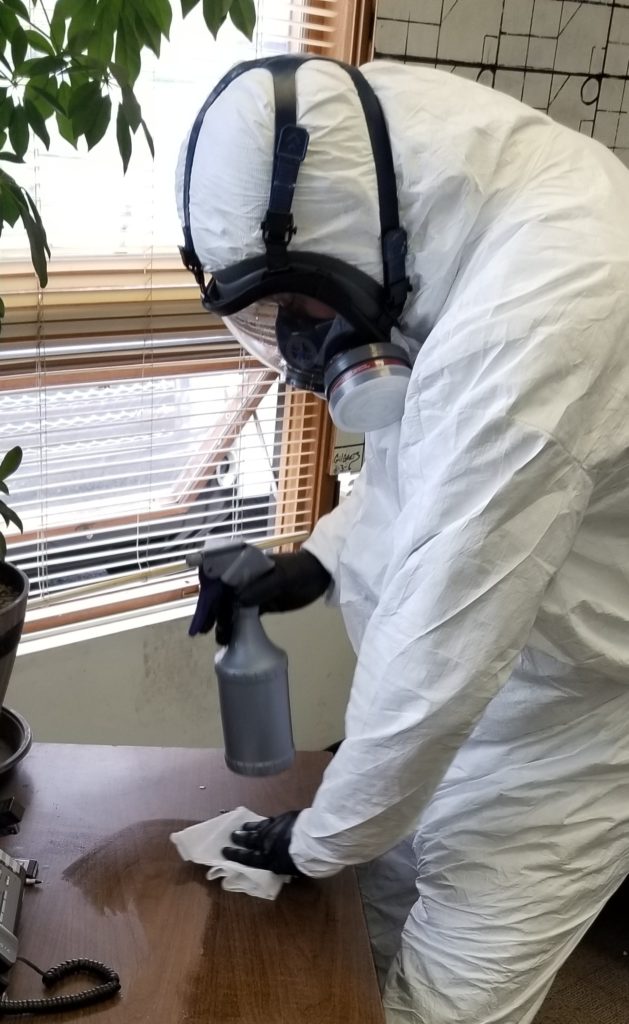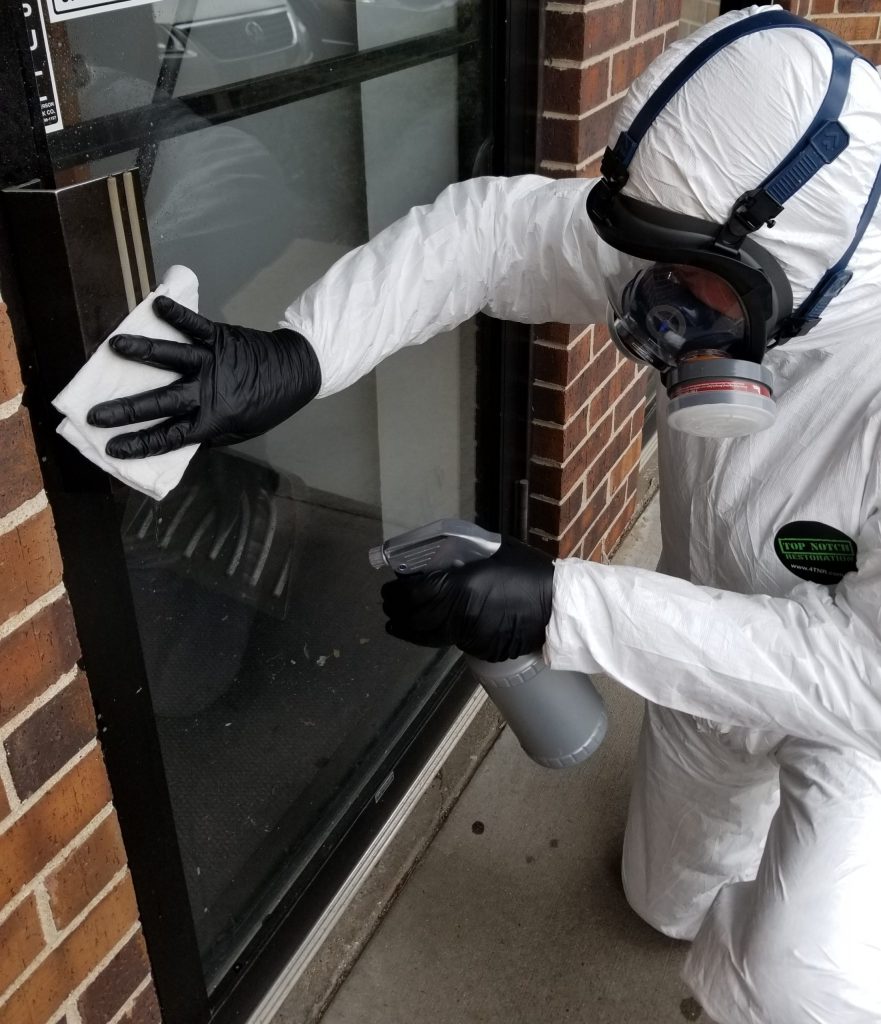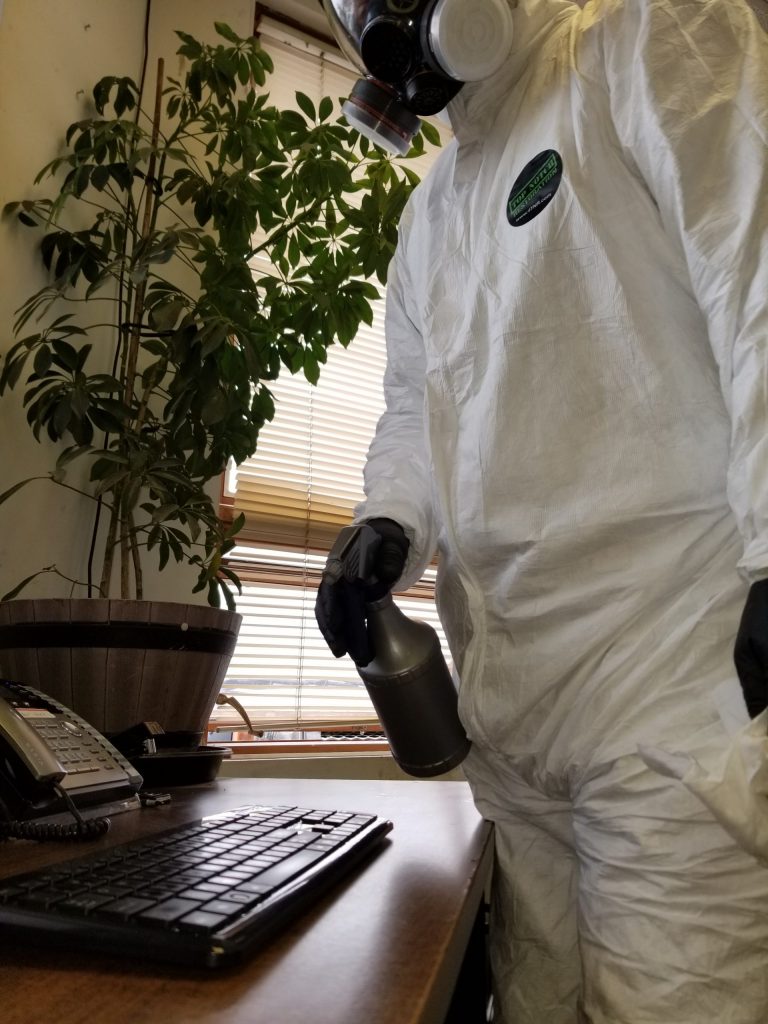Indoor Air, Space and Surface Disinfection Services Commercial and Residential Schaumburg IL
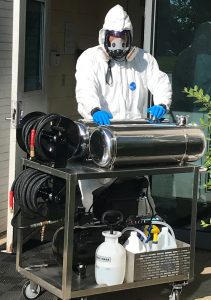 With the recent outbreak of COVID-19 virus, and as an important part of the treatment against a Sick Building Syndrome and Hazardous Sewage Mitigation, professional cleaning and appropriate disinfectant application helps you ensure a safer environment for all your workers and family. Top Notch Restoration follows Center for Disease Control & Prevention (CDC) guidelines, and we use EPA and CDC recommended disinfectant solutions in order to provide high levels of protection and prevention. Disinfectant Fog and High Touch surface sanitization available for commercial and residential customers.
With the recent outbreak of COVID-19 virus, and as an important part of the treatment against a Sick Building Syndrome and Hazardous Sewage Mitigation, professional cleaning and appropriate disinfectant application helps you ensure a safer environment for all your workers and family. Top Notch Restoration follows Center for Disease Control & Prevention (CDC) guidelines, and we use EPA and CDC recommended disinfectant solutions in order to provide high levels of protection and prevention. Disinfectant Fog and High Touch surface sanitization available for commercial and residential customers.
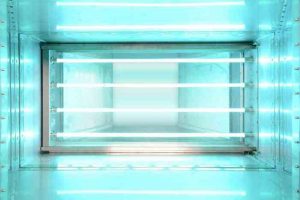 Fact: Indoor air sanitizing, UVC disinfection or surface disinfectant applications reduces spread of germs and viruses. Contact us for cleaning and sanitation services for your business or residence.
Fact: Indoor air sanitizing, UVC disinfection or surface disinfectant applications reduces spread of germs and viruses. Contact us for cleaning and sanitation services for your business or residence.
COVID-19 update Great news from Boston University
June 16, 2020
- Test results show that the virus could no longer be detected after seconds of exposure
- Signify to make its UV-C lighting technology widely available to other lighting companies
- Signify has been at the forefront of UV technology for more than 35 years
Eindhoven, the Netherlands – Siygnify (Euronext: LIGHT), the world leader in lighting, together with the National Emerging Infectious Diseases Laboratories (NEIDL)1 at Boston University in the US have conducted research that validates the effectiveness of Signify’s UV-C light sources on the inactivation of SARS-CoV-2, the virus that causes COVID-19.
Since the start of the SARS CoV-2 pandemic, Dr. Anthony Griffiths, Associate Professor of Microbiology at Boston University School of Medicine and his team have been working on developing tools to support scientific advancement in this field.2 During their research they have treated inoculated material with different doses of UV-C radiation coming from a Signify light source and assessed the inactivation capacity under various conditions. The team applied a dose of 5mJ/cm2, resulting in a reduction of the SARS-CoV-2 virus of 99% in 6 seconds. Based on the data, it was determined that a dose of 22mJ/cm2 will result in a reduction of 99.9999% in 25 seconds.3
Although the ongoing outbreak likely resulted originally from people who were exposed to infected animals, COVID-19, like other corona viruses, can spread between people. Infected people can spread COVID-19 through their respiratory secretions, especially when they cough or sneeze. According to the 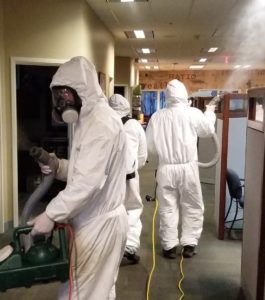 CDC, spread from person-to-person is most likely among close contacts (about 6 feet). Person-to-person spread is thought to occur mainly via respiratory droplets produced when an infected person coughs or sneezes, similar to how influenza and other respiratory pathogens spread. These droplets can land in the mouths or noses of people who are nearby, or they can possibly be inhaled into the lungs. It’s currently unclear if a person can get COVID-19 by touching a surface or object that has the virus on it and then touching their own mouth, nose, or possibly their eyes. Given what has occurred previously with respiratory diseases, such as MERS and SARS that are caused by other coronaviruses, it is likely that some person-to-person spread will continue to occur.
CDC, spread from person-to-person is most likely among close contacts (about 6 feet). Person-to-person spread is thought to occur mainly via respiratory droplets produced when an infected person coughs or sneezes, similar to how influenza and other respiratory pathogens spread. These droplets can land in the mouths or noses of people who are nearby, or they can possibly be inhaled into the lungs. It’s currently unclear if a person can get COVID-19 by touching a surface or object that has the virus on it and then touching their own mouth, nose, or possibly their eyes. Given what has occurred previously with respiratory diseases, such as MERS and SARS that are caused by other coronaviruses, it is likely that some person-to-person spread will continue to occur.
- Industrial machinery disinfection
- Office space sanitization
- Locker room, cafeteria, bathrooms sanitizing
- Large space High volume disinfection
